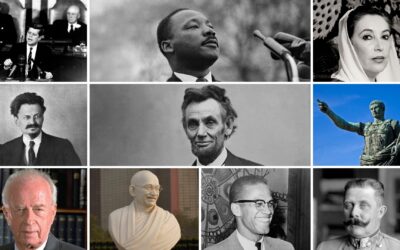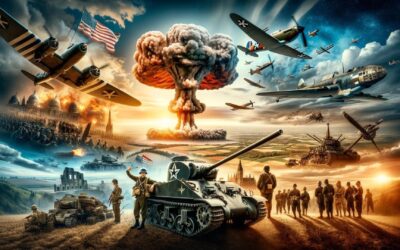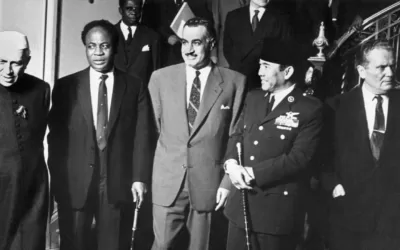In the heart of a bustling city, an eerily haunting sculpture looms large, cast in dark bronze. It’s an echo of a time and a sentiment that defined the better part of the 20th century. This sculpture, like many others across the globe, is an artistic response to the onset of the Atomic Age. The legacy of the nuclear era is more than just political and scientific. It’s been cemented in our collective cultural consciousness, pervading our arts, literature, and cinema. This article seeks to illuminate the post-nuclear narrative as told by artists, writers, and filmmakers, serving as mirrors to societal attitudes and fears.
The sudden awakening to the power of the atom, heralded by the bombings of Hiroshima and Nagasaki, triggered a profound existential crisis. With the awesome power to destroy civilization now a reality, the human psyche was plunged into an introspection that was unlike any before. The result was a torrent of artistic and cultural expression that attempted to grapple with the enormity of the nuclear reality.
The post-war period in art was marked by a wave of abstraction and a break from the traditional norms. Painters such as Jackson Pollock and Willem de Kooning embodied this shift. They moved away from the classical representational art to portray the world’s confusion and the deep-seated anxiety of living under the nuclear shadow.
It was during the 1980s, at the peak of the Cold War, that the nuclear theme became more explicitly reflected in the visual arts. A prime example is the iconic sculpture “Cloud Gate,” also known as “The Bean,” by artist Anish Kapoor. Kapoor himself described the sculpture as a “nuclear-powered object.” Its seamless surface and the distorted reflections create an impression of a world reshaped and refracted by nuclear power, echoing the distorted reality that the nuclear age presented.
The written word proved to be another powerful medium to capture the dawning nuclear anxiety. A plethora of post-apocalyptic literature emerged, painting bleak scenarios of a world ravaged by nuclear warfare. Nevil Shute’s “On the Beach” stands as a haunting portrayal of a post-nuclear world, telling a tale of the last survivors of a global nuclear holocaust. It stirred the collective consciousness, forcing people to contemplate the real consequences of a nuclear war.
Comic books and graphic novels have also played a significant role in this narrative. The likes of “Watchmen” and “Maus” explored the repercussions of the atomic age. The omnipresent Doomsday Clock in “Watchmen” is a striking symbol of nuclear destruction, ticking ever closer to midnight, the hour of global annihilation.
The silver screen brought the nuclear narrative into vivid, moving technicolor. Movies like “Dr. Strangelove,” “The Day After,” and “Threads” showcased the absurdity, fear, and destructive potential of nuclear war. Even the creature-feature genre, with films like “Godzilla,” was a response to nuclear testing, symbolizing the monstrous consequences of atomic power.
Meanwhile, the advent of the atomic bomb inspired a significant cultural shift in Japan. The “Hibakusha Cinema,” films made by and about the survivors of the atomic bombings, became a potent force in Japanese cinema. Movies like “Black Rain” depicted the harrowing realities and human suffering inflicted by the bombings, serving as a strong anti-nuclear statement.
Music also chimed in, adding its rhythm to the nuclear discourse. Tracks like “99 Luftballons” by Nena and “Two Tribes” by Frankie Goes to Hollywood, were chart-toppers that echoed the nuclear anxiety of the 80s. They brought the nuclear debate right into the living rooms and personal tape decks of the public.
The advent of the atomic age led to a deep societal introspection that found expression in every form of art and culture. Artists, writers, and filmmakers have responded to the nuclear age with creations that reflect societal attitudes, amplify fears, and most importantly, underscore the need for peace and disarmament. The continuing impact of their work underlines the power of culture in shaping our understanding of the world and the importance of narratives in influencing policy decisions. The story of the Atomic Age, then, is more than just a tale of science and politics—it’s a rich tapestry woven from the threads of our collective cultural response.
Keywords:
- Atomic Age: The period in history which began with the detonation of the first nuclear bomb in 1945 and is characterized by the influence of nuclear power on politics, society, and culture.
- Existential Crisis: A moment at which an individual questions the very foundations of their life: whether their life has any meaning, purpose, or value.
- Abstract Art: A style of art that does not attempt to represent an accurate depiction of visual reality and instead uses shapes, colors, forms, and gestural marks to achieve its effect.
- Cold War: The political, military, and ideological conflict between the United States and the Soviet Union and their respective allies from the end of World War II until the early 1990s.
- Post-apocalyptic Literature: A sub-genre of fiction, usually science fiction or horror, that is concerned with the end of civilization due to a potentially existential catastrophe such as nuclear warfare, pandemic, extraterrestrial attack, etc.
- Doomsday Clock: A symbol which represents the likelihood of a man-made global catastrophe, with midnight symbolizing the apocalypse.
- Hibakusha Cinema: A genre of Japanese cinema dealing with the experiences of survivors of the atomic bombings of Hiroshima and Nagasaki.
- Global Annihilation: Complete destruction or obliteration on a worldwide scale, often associated with nuclear warfare.
- Cultural Consciousness: The shared beliefs, morals, expectations, and lifestyle that characterize a group of people.
- Collective Response: A joint reaction or action taken by a group of people in response to a particular situation or event.
Key Takeaways:
- The atomic age has had a profound influence on various forms of art and culture, including visual arts, literature, cinema, and music.
- The existential crisis triggered by the onset of the atomic age led to a wave of abstract art, which mirrored the confusion and anxiety of the time.
- Post-apocalyptic literature and cinema have portrayed the grim realities and potential consequences of nuclear war.
- The nuclear age has been represented in popular culture through symbols like the Doomsday Clock in “Watchmen” and sculptures like “Cloud Gate.
- Japanese cinema, especially “Hibakusha Cinema,” has been a potent force in communicating the human suffering caused by the atomic bombings of Hiroshima and Nagasaki.
The Nuclear Age Articles
Unraveling The Atomic Age: The Life and Legacy of J. Robert Oppenheimer
Unveiling the Atom: The Manhattan Project’s Deep Impact on World History
Albert Einstein: The Maverick Mind that Revolutionized Physics
Leo Szilard: The Atomic Pioneer’s Crusade for Peace
The Ethical Odyssey: Exploring Morality in the Course of Scientific Discovery
Los Alamos National Laboratory: Navigating the Past, Present, and Future of Scientific Innovation
The Cold War: Superpowers in the Ballet of Weaponry
Nuclear Proliferation: The Ever-Present Global Challenge
Interplay of Science and Politics: The Unsung Dance of Progress
Enrico Fermi: Mastermind Behind the Nuclear Age
From Atomic To Thermonuclear: A Detailed Examination of Nuclear Weapon Evolution
The Unforgotten Echoes: Hiroshima and Nagasaki’s Tale of Nuclear Devastation and Human Resilience
Living Under the Mushroom Cloud: The Psychological Impact of the Nuclear Age
Nuclear Fallout: Unmasking the Invisible Threat to Health and Environment
The Power and Peril of Nuclear Energy: A Balanced Perspective
Radiation Sickness: Unveiling the Hidden Costs of the Nuclear Age
From Darkness to Light: Lessons from Chernobyl and Fukushima
Deciphering the Nuclear Waste Conundrum: The Path Towards Sustainable Solutions
Guarding the World from Nuclear Threats: International Laws for Nuclear Disarmament
Journey to Peace: Unraveling the Path to Global Nuclear Disarmament
Culture Echoes of the Atomic Age: Artistic Narratives in the Nuclear Era












0 Comments